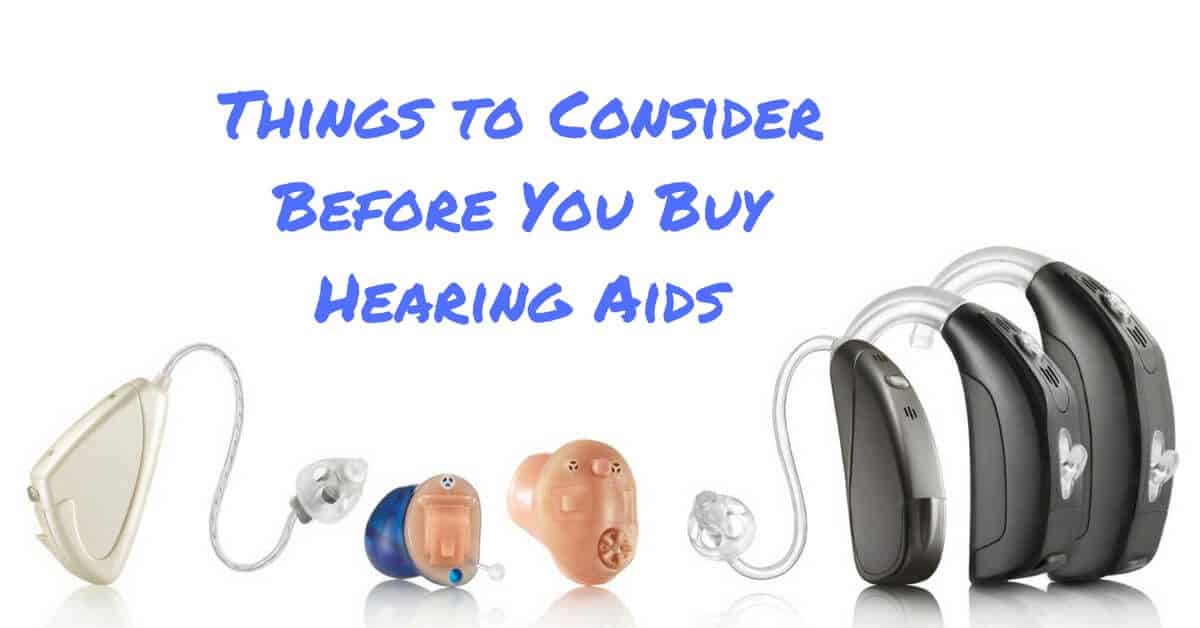If you’ve experienced changes in your hearing, you may have taken a hearing test and been prescribed hearing aids. At My Hearing Centers, our hearing specialists take your lifestyle and hearing needs into consideration when recommending the perfect hearing aid. We pay close attention to ensuring the best fit, quality of sound, and a natural listening experience.
As with all big purchases, the amount of information about technology and features may be daunting. Here we provide you with four things to consider when it comes to choosing the right hearing aid for you.
Acceptance
Acceptance is a huge part of the process toward better hearing. Hearing loss is the third most common medical condition in the US, affecting 20% of the population. At the same time, people wait an average of seven years from the time they first experience changes in their hearing until the time they decide to seek treatment. If you’ve recently been diagnosed with a hearing loss, it is natural to feel worry or concern. However, keep in mind that hearing loss is treatable, and with the proper devices, you’ll experience significant benefits.
One major benefit is reconnecting with the ones you love. Use this time to talk to your loved ones and ask for their support and assistance as you begin your journey to better hearing. With a clear mind, think about the features you require of a hearing aid to assist you in daily life. Chances are, there’s a perfect match out there.
Hearing Aid Features
When’s the last time you thought about hearing aids? If it’s been more than five years, then you’re in for a surprise. In the past decade, hearing aids have undergone a technological revolution. Gone are the clunky, flesh-colored devices of the past. These days, hearing aids are essentially mini-computers: fast, smart, and sleek.
Hearing aids are equipped with many different features that address the different aspects of hearing loss. Features include: improved speech recognition, noise cancellation, echo shield (to preserve sound in challenging acoustic environments), music features for music lovers, feedback cancellation, and wireless connectivity, to name a few. Depending on the configuration and degree of your hearing loss, our hearing specialists at My Hearing Centers will recommend hearing aids that provide the best fit.
A major advancement in hearing aid technology is wireless connectivity. Through Bluetooth connection, certain hearing aid models are able to connect to smartphones or personal electronic devices. This wireless connection provides you with seamless access to sounds, whether it’s a phone call, a YouTube video, or your favorite rock album. Connection to a smartphone also gives you control over adjustments with your listening experience. Additionally, a GPS feature archives your listening preferences in different locations and makes automatic adjustments when you return to saved locations.
Hearing Aid Style
Do you wear eyeglasses? Do you experience dexterity issues due to arthritis? Do you want discretion with your hearing aids? These things are important when considering the style of hearing aid. Hearing aids are available in a number of styles, differing in how they are worn.
For people with eyeglasses, perhaps the best option is in-the-ear (ITE) hearing aids. ITE hearing aids are worn in your ear, with the shell sitting on the surface of your ear (available in a full shell or a half shell).
If you prefer more discretion in appearance, there are in-the-canal options, such as completely-in-canal (CIC) or invisible-in-canal (IIC). Both styles are worn deep inside your ear canal and tend to accommodate lower degrees of hearing loss. While these styles are discreet, their construction may pose a difficulty for those with dexterity issues, as the controls for volume and program are quite small and hard to reach.
The other popular style of hearing aids is behind-the-ear (BTE). BTE hearing aids have two parts: a plastic casing worn over the ear, which houses electrical components, and a plastic tubing that connects to a mold that sits in your ear canal. As these tend to be larger, BTE hearing aids are recommended for people with dexterity issues.
Hearing Aid Construction & Battery Life
Are you up and out the door every morning, only to return at night? Do you spend most of your time at home? Will you be in challenging noise situations where your hearing aids will have to work harder? Depending on your lifestyle, there is a battery solution for you. Traditional hearing aid batteries must be replaced on a regular basis. It’s a good practice to carry an extra pair of batteries on you, just in case. Rechargeable hearing aids, on the other hand, don’t require any battery replacement in a four to five-year span, and need only a short charge for a full day of listening.
The electronic components of hearing aids are sensitive to moisture and debris, but luckily, hearing aid manufacturers have developed advanced materials to combat these enemies! Most hearing aids are protected by some form of nano-coating, which is especially useful for people who lead active lifestyles. If you exercise regularly or spend a lot of time outdoors, the construction of your hearing aid is important to consider. Nano-coated hearing aids provide more protection from moisture, debris, and the elements. If you lead an active lifestyle, exercising or spending a lot of time outdoors, this would be important to consider.
At My Hearing Centers, we will work with you to determine the best hearing aids for your lifestyle. Contact us today to find your perfect hearing solution.


